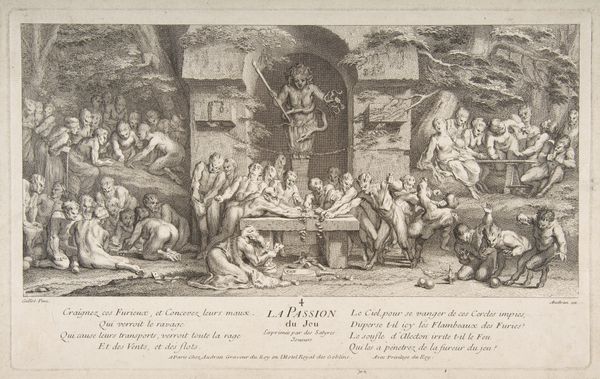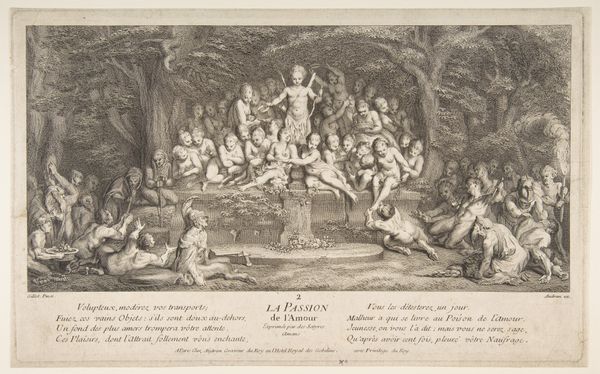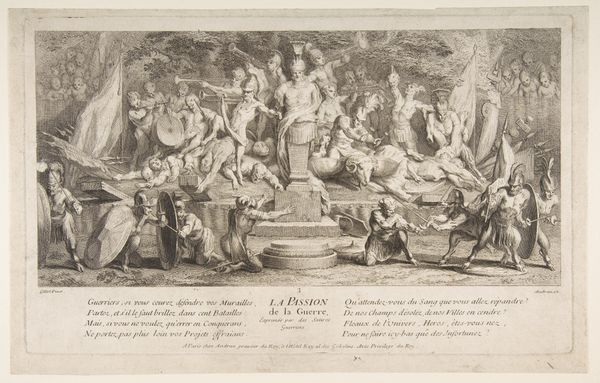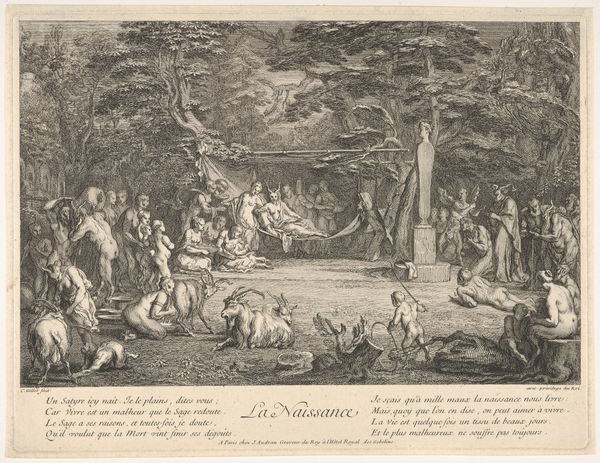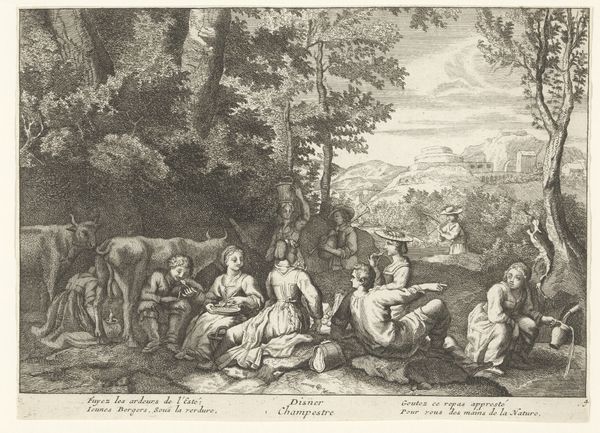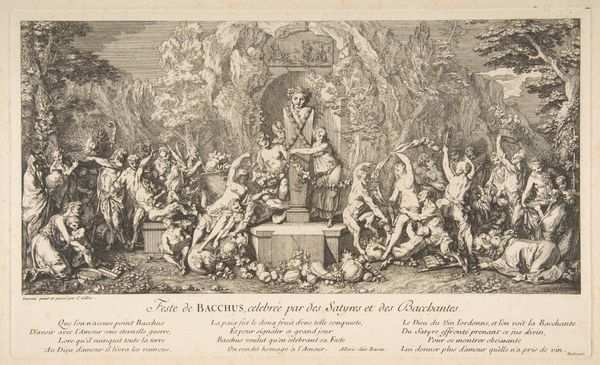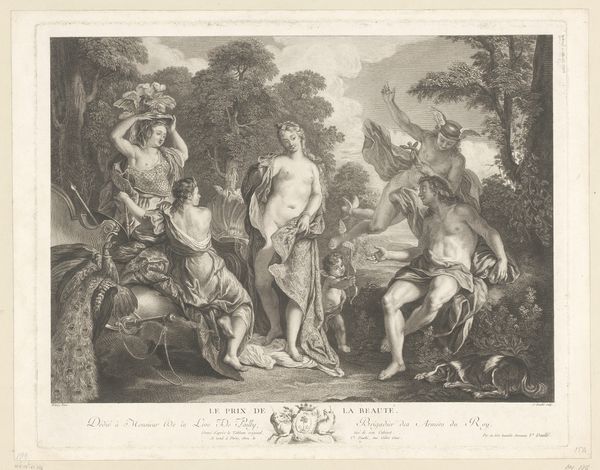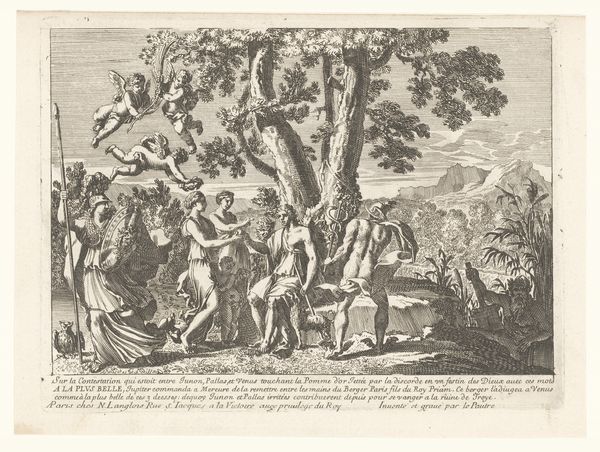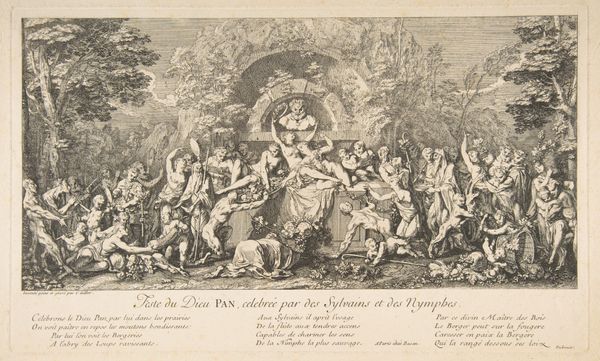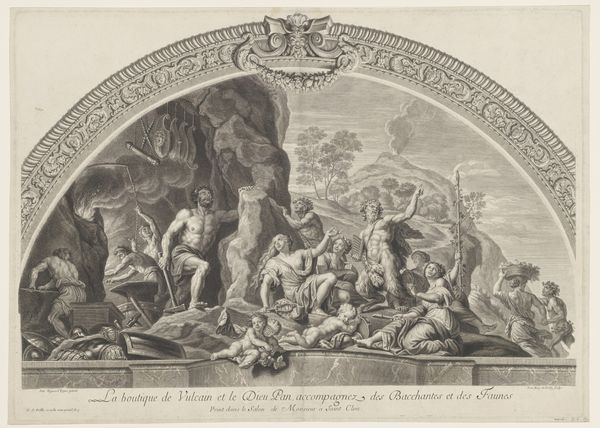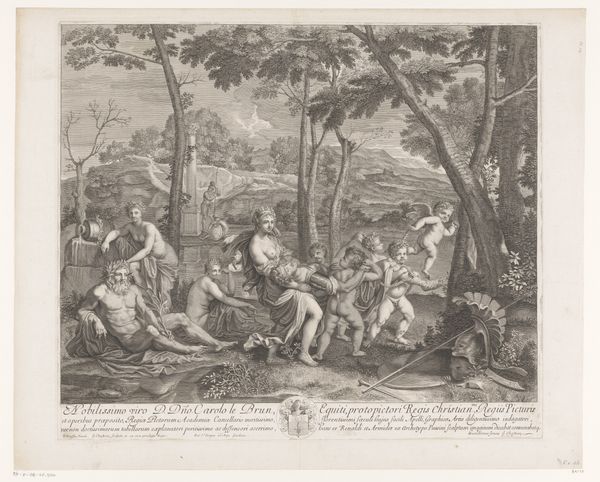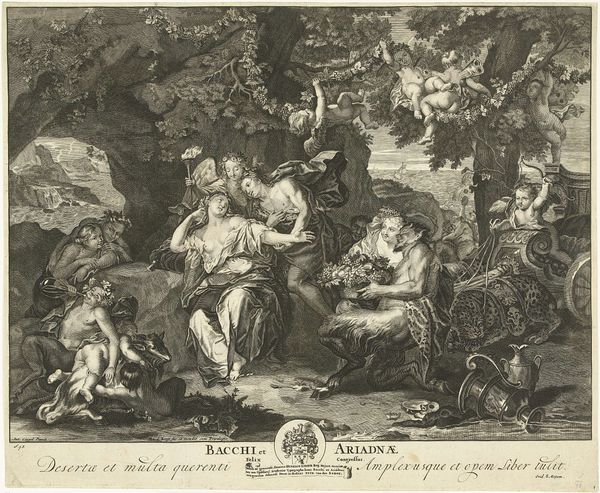
drawing, print, engraving
#
drawing
#
allegory
#
baroque
# print
#
old engraving style
#
female-nude
#
nude
#
engraving
#
male-nude
Dimensions: sheet: 10 1/16 x 15 7/8 in. (25.5 x 40.3 cm) image: 8 11/16 x 14 3/16 in. (22 x 36.1 cm)
Copyright: Public Domain
Curator: This engraving, conceived by Claude Gillot sometime between 1685 and 1722, is titled "The Passion for Wealth." What's your first reaction to it? Editor: The frenzy. It’s chaotic, yet ordered, all focused on that central figure. There’s a distinct energy to it. Almost aggressive. Curator: Indeed. Consider the title. "Passion" here isn’t about love, but about an overwhelming, even destructive obsession. We see that play out in the varied depictions of supplicants in different poses of devotion. Look at how wealth becomes fetishized. Editor: I noticed the positioning of that central statue right away, raised high on a plinth; that form evokes classical depictions of Fortuna, or maybe even the Christ child – replacing these more traditional idols or icons with Wealth. It really flips the symbolic script. I suppose there is some satirical commentary as well? Curator: Absolutely. The nakedness of many figures also alludes to vulnerability and a loss of innocence or morality in this relentless pursuit of riches. It aligns with similar critiques found during the Baroque period on morality and social structures, like paintings and theatrical works commenting on the seductive power of avarice. Consider also the placement of figures who recline with one leg exposed; Gillot would likely be drawing parallels to images of the crucified christ figure who suffered with one leg awkwardly turned. Editor: And the faces, distorted and straining… Even those positioned at the banquet high up, almost a 'heavenly host', their revelry appears deeply unhappy. They represent those at the 'top', yet that seems hardly to correlate with freedom or liberation. This passion seemingly traps everyone regardless of their 'achievements'. Curator: That visual trapping of individuals and the clear emphasis on those who exploit others' suffering provides such a sharp critique on mercantilism, which would gain influence during Gillot’s lifetime and be increasingly regarded by people as a new type of social ill. Editor: I like how it subverts visual codes. An icon meant for veneration replaced by a symbol of… well, here, something clearly rotten. It's a potent condemnation of priorities. Curator: Yes, the engraving serves as a striking reminder of how readily societal values can become perverted in the chase of wealth and dominance. Editor: And the universality of that critique keeps this surprisingly relevant. It really highlights the human cost of greed – something we are always wrestling with.
Comments
No comments
Be the first to comment and join the conversation on the ultimate creative platform.
